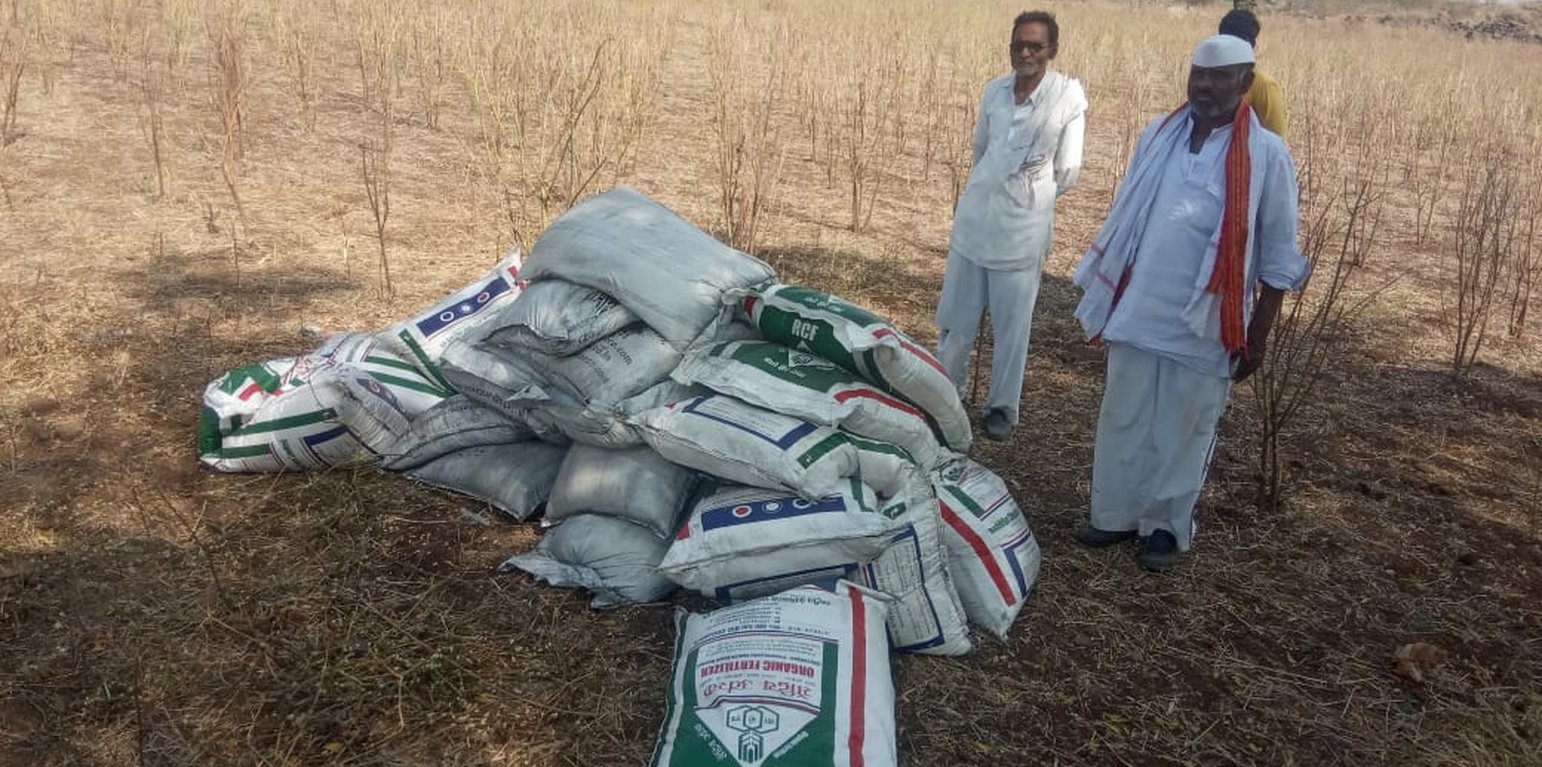



In India, over 377 million people live in almost 8,000 cities or towns. They generate 62 million tons of municipal solid waste annually, according to the country’s government. More than 80% of such solid waste is deposited indiscriminately without treatment at dump yards in an unhygienic manner. In the Indian countryside, the ecological sustainability of agriculture has been at risk due to the excessive use of chemical fertilizers and monoculture since the ‘Green Revolution’ led to the degradation of land.
City compost is one of the solutions to both problems. Waste collected by municipal corporations is processed to make compost. During this process, organic waste is collected in the cities, recycled, processed to compost, and finally used as organic matter by farmers complementing the traditional farmyard manure. In such manner carbon that is contained in the waste is recycled back into the soil thus enhancing agricultural production.
Nashik Municipal Corporation in Nashik town of Maharashtra State in India has set-up a waste processing plant in the town. This plant processes the city’s organic waste into compost through a scientific process. The processed city compost is packed into bags of 50 kg each and these bags are supplied to fertilizer companies and further on to farmers. There are Government subsidies available to farmers for the purchase of compost bags subject to documentary proofs and other conditions.
Under the “Soil Protection and Rehabilitation for Food Security (ProSoil)” project of GIZ, farmers and FPOs (farmer producer organizations) have been supported for the application of city compost in their fields. Supported by the implementing agency WOTR (Watershed Organization Trust) the city compost application in farmer's fields in 3 districts of Maharashtra namely Ahmednagar, Jalna and Dhule has been introduced. Interventions covered more than 3000 farmers and around 1100 Acres of land. The entire intervention is implemented with the help of FPOs, which procured the city compost from ‘The Nashik Waste Management Centre’ and sold the procured material further to the farming communities. This has ensured easy availability to the farmers without incurring undue travel cost. Farmers applied the city waste compost in their farms during the month of May/June (before the onset of monsoon) to different crops.
City compost was applied to different crop combinations such as paddy-chickpea in Dhule District (moderate irrigation facility), greengram-sorghum in Ahmed Nagar District (Rainfed conditions) and soyabean-wheat in Jalna District (irrigated conditions). Farmers have seen the benefits of city compost across all crop combinations and geographies. The application of city compost has been of benefit to farmers in reducing the usage of synthetic fertilizers along with reducing the dependency on farmyard manure as it is getting scarce day by day. Farmers have also realized the improved soil health leading to better productivity of their farms.
The Indian government has also launched several initiatives to promote the use of city compost in agriculture. For example, the National Mission for Sustainable Agriculture provides financial assistance to farmers for the purchase of city compost, and the Fertilizer Control Order allows the use of city compost as a fertilizer. Although developing city waste as compost and its application in the farmer's field is a nascent approach from the India Government and other stakeholders, however looking at the availability of waste, the commitment of the Indian Government through its ‘Clean India Program’ and the vast issue of synthetic fertilizers usage and high subsidy burden, the use of city compost in agriculture has the potential to contribute to sustainable solutions in the area of waste management while improving soil health and reducing the use of synthetic fertilizers in India.
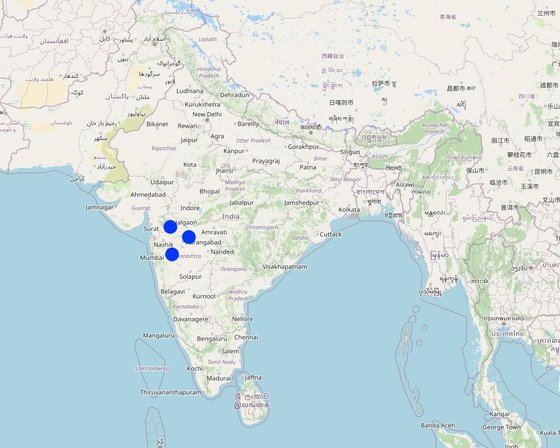
Localização: Ahmednagar, Jalna, Dhule, Maharashtra, Índia
Nº de sites de tecnologia analisados: >1000 locais
Difusão da tecnologia: Aplicado em pontos específicos/concentrado numa pequena área
Em uma área permanentemente protegida?: Não
Data da implementação: 2021
Tipo de introdução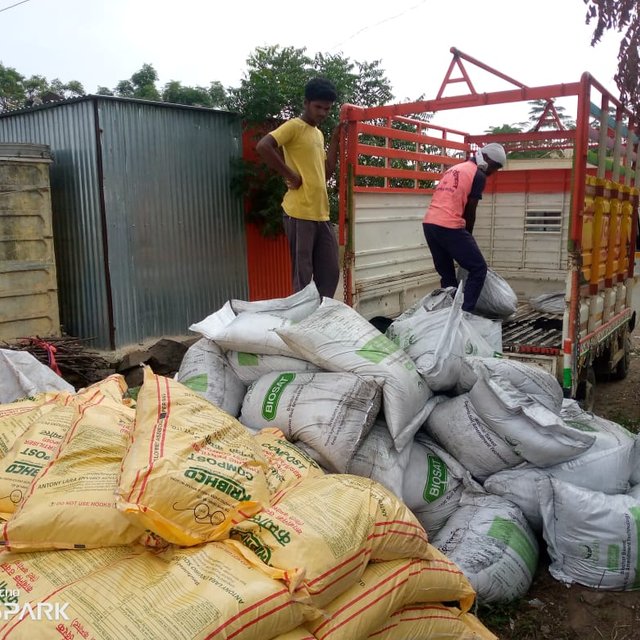
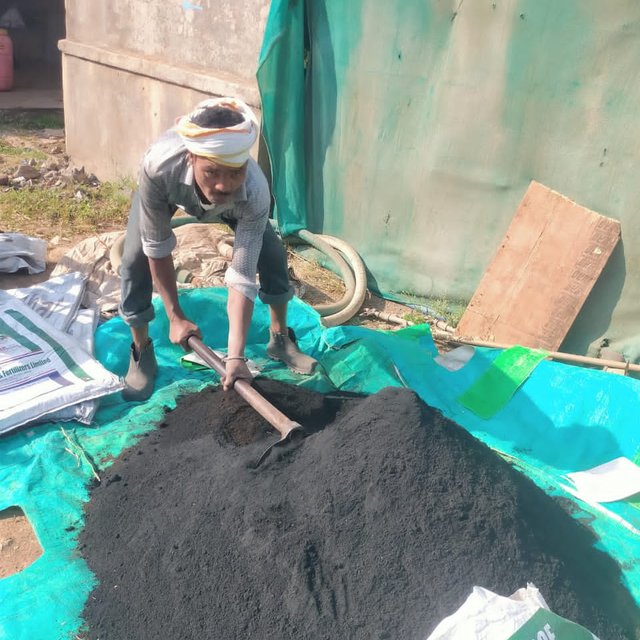



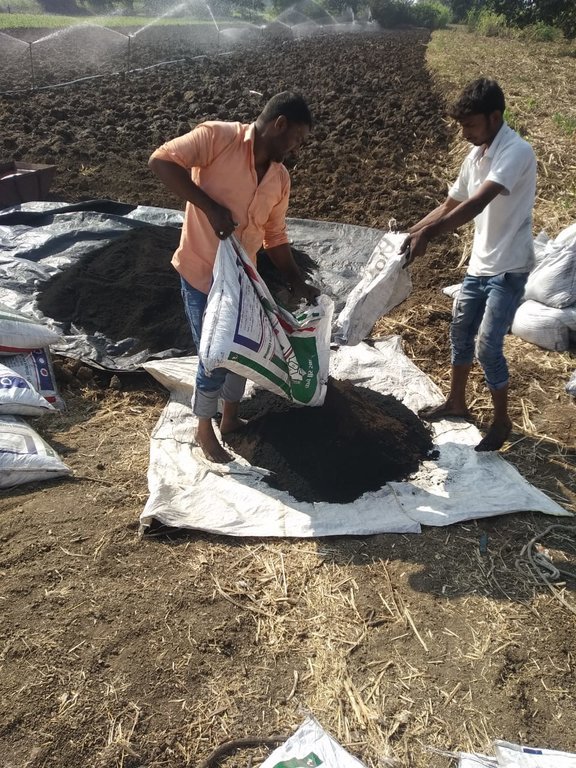
| Especifique a entrada | Unidade | Quantidade | Custos por unidade (INR) | Custos totais por entrada (INR) | % dos custos arcados pelos usuários da terra |
| Mão-de-obra | |||||
| Application of city compost | Person days | 2,0 | 300,0 | 600,0 | 100,0 |
| Irrigation | Person days | 2,0 | 300,0 | 600,0 | 100,0 |
| Equipamento | |||||
| Hired machinery for mixing the city compost in soil | Hours | 2,0 | 900,0 | 1800,0 | 100,0 |
| Fertilizantes e biocidas | |||||
| City compost | Ton | 2,5 | 1200,0 | 3000,0 | 100,0 |
| Custos totais para a manutenção da tecnologia | 6'000.0 | ||||
| Custos totais de manutenção da Tecnologia em USD | 75.0 | ||||
In terms of infrastructure and services, Ahmednagar is well-connected with most services. However, still there is a scope to improve these further to make farmers' life better.
Quantidade anterior à GST: 1800 kg
Quantidade posterior à GST: 2300 kg
Based on the assessment of the project implementing agency. However, crop production increases are not only to city compost. There were other technologies, which have also contributed to improving productivity. There is no assessment for the stand-alone compost intervention.
Reduced usage of synthetic fertilisers made the grains and pluses safer for consumption
Quantidade anterior à GST: 3600
Quantidade posterior à GST: 3200
Reduced cost towards synthetic fertilisers
Improved income due to improved productivity. Quantifiable numbers are however, not available.
Training and handholding support was provided from the project for procurement of city compost, governance and other areas.
Reported by the implementing agency